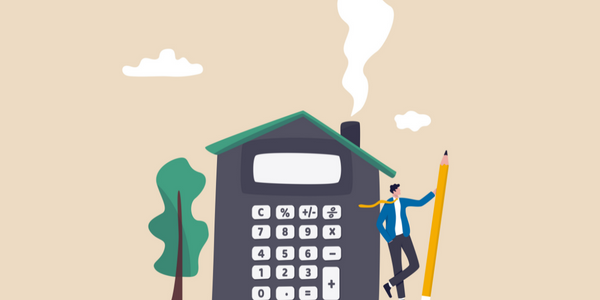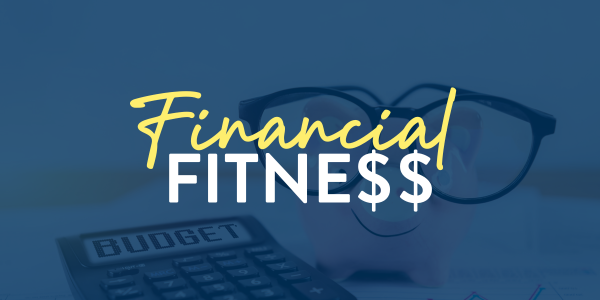
It’s an age-old question, at least when it comes to mortgage interest rates: Is it better to float your rate or lock in your mortgage? There are pros and cons to each, which can vary based on the overall economy, as well as unpredictable factors that can cause rates to go up or down.

There is some risk in either option: Lock in your mortgage and rates could go down, float your rate and they could go up, impacting your mortgage payment. Talking through the float vs. lock strategies can help you come up with a game plan no matter the current environment.
First, let’s get a few basic definitions down.
Locking In Your Rate
Like the stock market, interest rates can fluctuate day to day and even hour to hour. This is why some borrowers prefer to lock in their rate when they apply for a mortgage loan. There are different lock periods available, ranging from 15 days all the way up to a year for a construction loan. Most locks done at application are in the range of 45 days, but your loan officer can assist with choosing the right length of time for you.
Float Your Rate
Floating an interest rate essentially means your mortgage will ride out the sea of bumps and dips—aka changes in the average rate—between the time you apply for your mortgage loan and the time you take the plunge and lock your rate. Most people who opt to float their rate are hoping for a rate drop before they lock in.
What Causes Interest Rates to Vary?
A whole number of things can cause interest rates to move up and down. These include your typical supply and demand, as well as inflation, the Fed, and even unpredictable events, such as the pandemic, war, natural disasters, and more. Even during non-volatile times, there’s a good chance the advertised rate you see when you apply for a home loan won’t be the same as the day your loan closes. You can read more about variables that impact rates here.
Now that we’ve got a basic understanding of your options and how rates work, let’s talk strategy.
When It’s a Good Idea to Lock Your Rate
Most people lock their rate at approval, so there are no surprises later. Locking in your rate brings about predictability, which is almost always welcome in a process that can feel overwhelming and full of surprises at times. Knowing that your rate won’t go up can provide peace of mind as you search for that perfect home.
Every now and then you find a dream home that really stretches your budget. Locking in your rate can be a great idea in those circumstances. If you’ve run the numbers and know you’re at the top of your budget when it comes to your monthly payment, it can be a smart move to lock in your rate. The risk associated with an increase may outweigh the chance that rates fall, and if they do fall you may be able to exercise a one-time float-down option.
It's important to remember that a housing budget isn’t just the amount of money you’re comfortable spending on a home; it also applies to the amount of money a mortgage lender is willing to let you borrow. With that in mind, you run a risk if you choose to float the loan and rates rise. You could end up in a situation where you no longer qualify for that home based on an increase in rates.
Some people choose to lock their rate if they know they’re less than 30 days from closing on their home. In these instances, you’re nearing the finish line and want to make sure no other blips derail your home purchase. Keep in mind that you have to lock your rate at least seven days before your loan closes to avoid any delays.
When It’s a Good Idea to Float It
For most people, time is of the essence when buying a home, especially in a hot real estate market. That’s when it can pay to lock and move on, knowing that your transaction is progressing. Others have a longer timeframe, and if the market is solid it might make sense to lock closer to the end of the transaction to save a few bucks on the cost of the lock.
Timing plays a key role when it comes to float vs. lock. The standard rate lock options are 30, 45, 60, or 90 days.
If your transaction hits a snag, you can be up against the expiration of that lock. The good news is that your loan officer deals with this every day and is very aware of timing, and will even have some options to consider if it looks like you’re going to miss your deadline.
Another thing to consider is the current market. If the market is stable or even declining, it can make sense to float and see what the market does. This is always a risk, but it makes sense in very specific situations. Your APM Loan Advisor can help determine whether floating is the right decision for you.
What Happens if a Rate Lock Expires?
That depends on the terms of your rate lock. Some mortgage lenders will grant an extension for a fee. Others will not, in which case your rate will revert to the current interest rate (assuming you qualify for the published rate).
What About Buying Points?
One way to secure a lower interest rate is through discount points. In essence, you pay some money upfront for a lower rate on your mortgage—it’s like prepaying your interest. The cost of these discount points—1 point typically equals 1% of your mortgage—can be rolled into your closing costs.
Paying upfront to lower your mortgage payment may sound like a no-brainer, but it isn’t always. It will depend on a few factors, including whether you have that cash on hand or can finance the cost into your loan (remember, you also have to supply a down payment, in addition to other closing costs and origination fees).
Another factor to consider is how long you plan to occupy the home. As a general rule, you tend to break even on buying points after about six years. It’s important to consider that if you wrap these costs into your loan amount you will be paying them over the life of the loan.
We know how important mortgage interest rates are to the conversation about owning a home. The strategy that’s right for you will vary based on your situation and preferences.
To learn more about the current interest rate inventory and discuss options for your specific situation, click here to connect with an APM Loan Advisor today.








